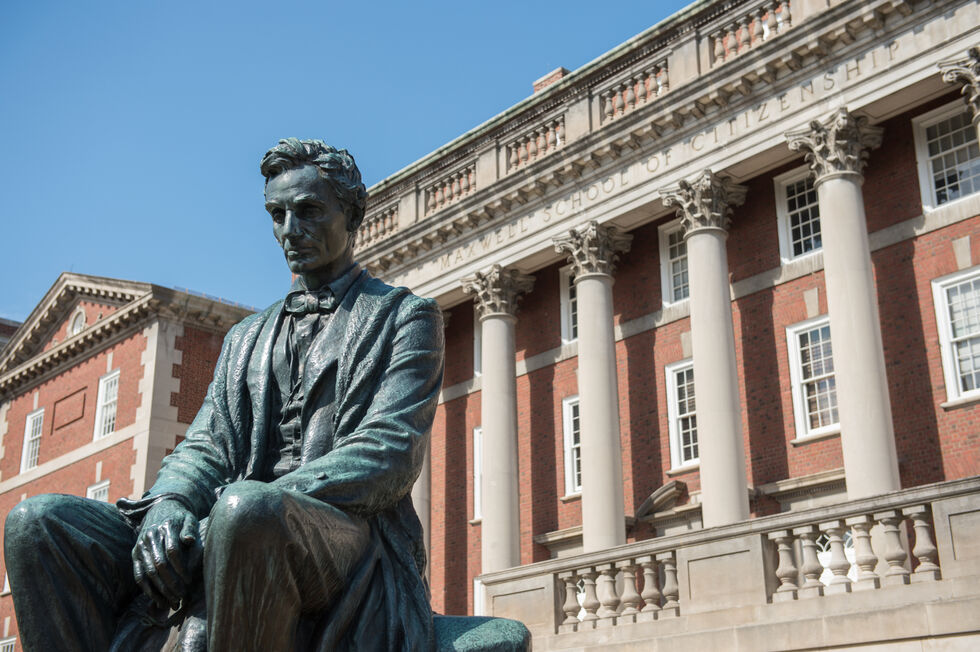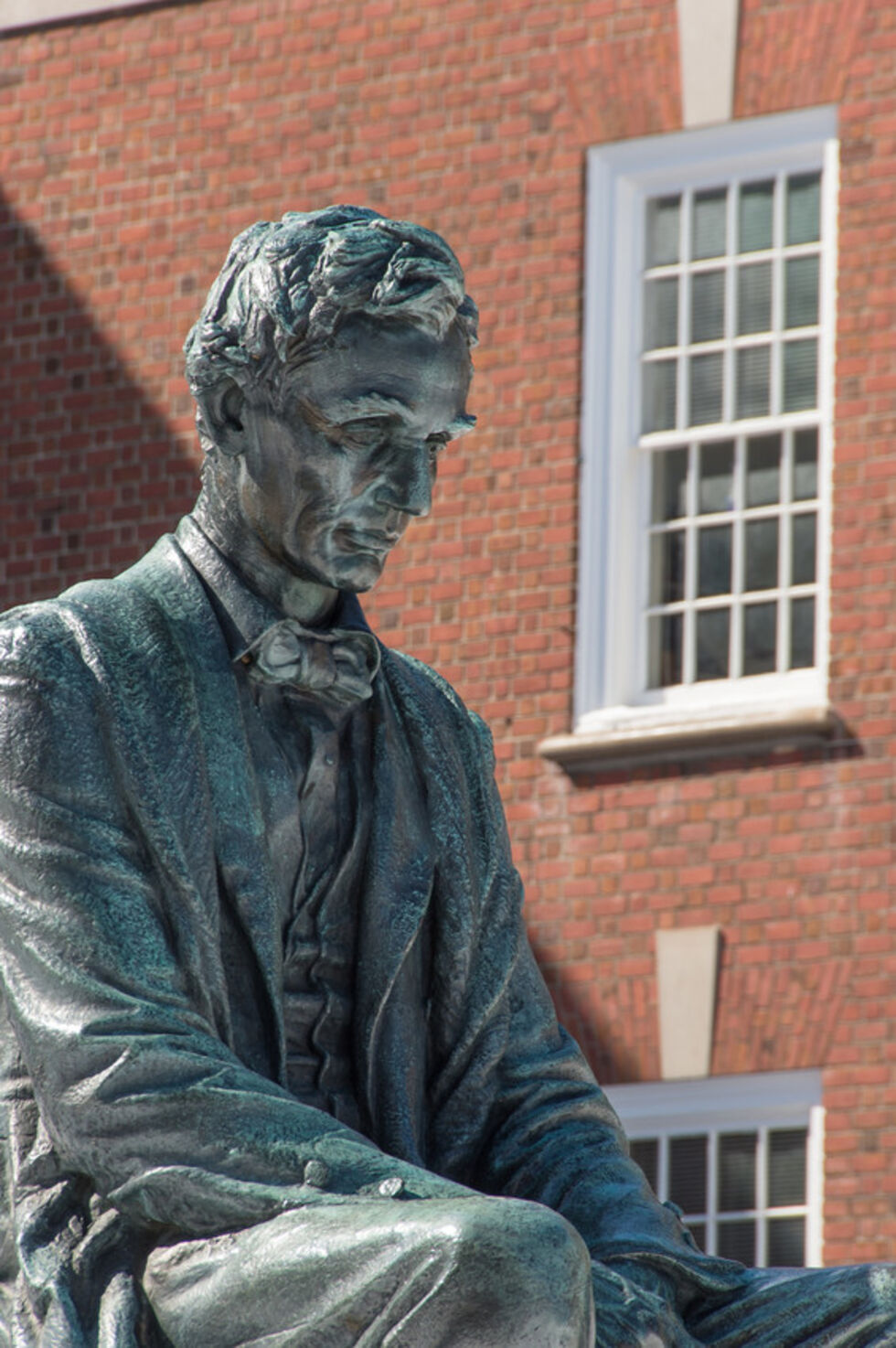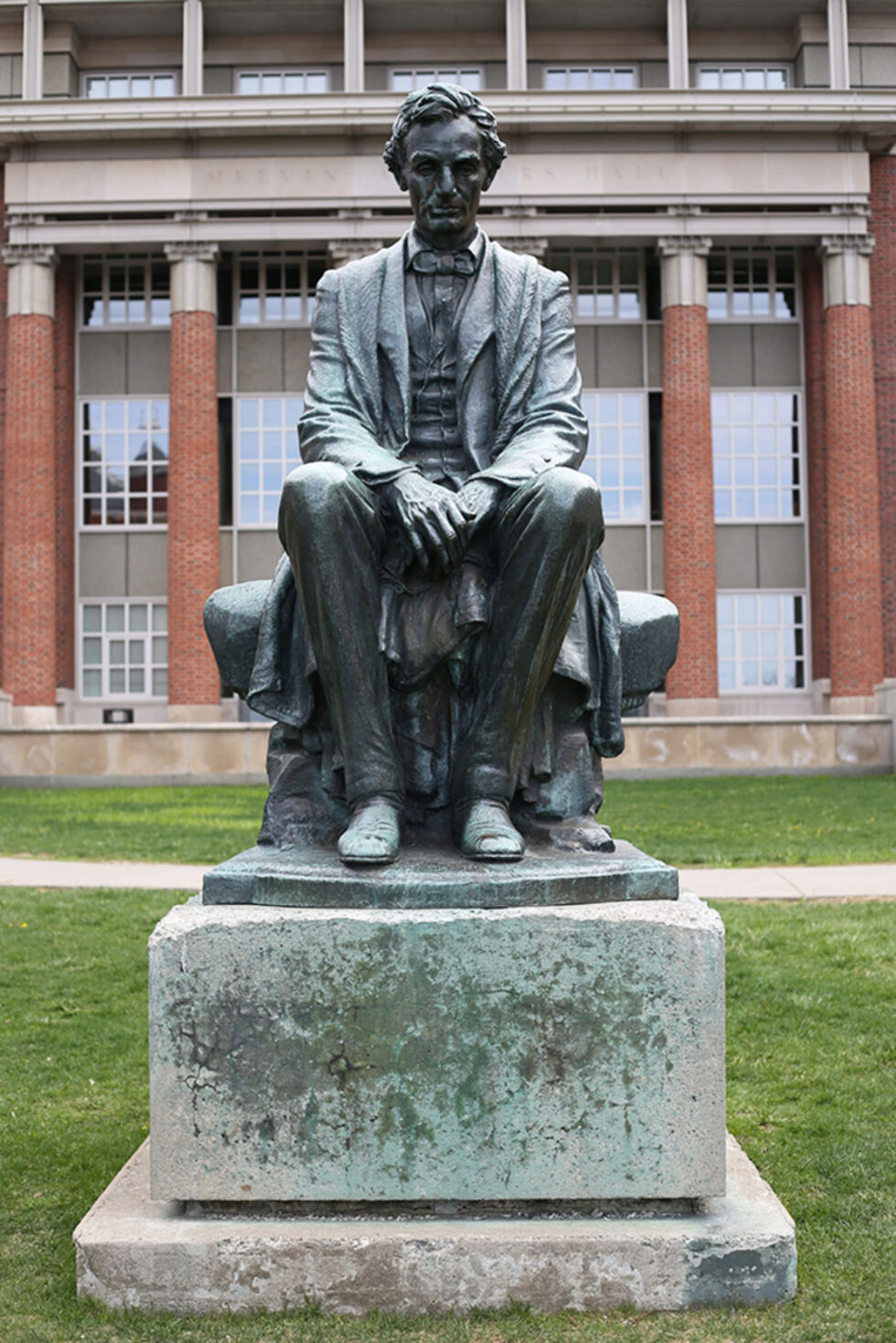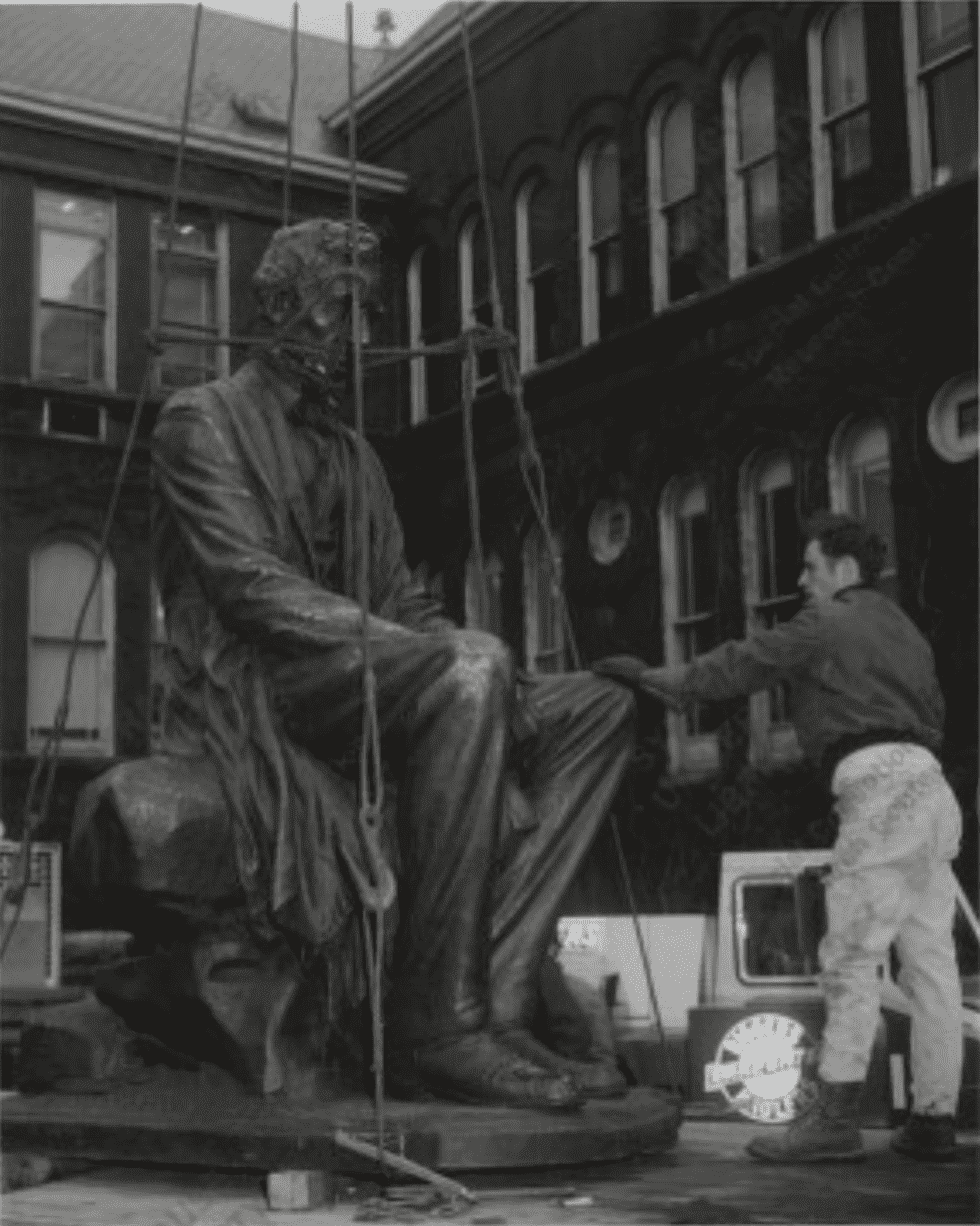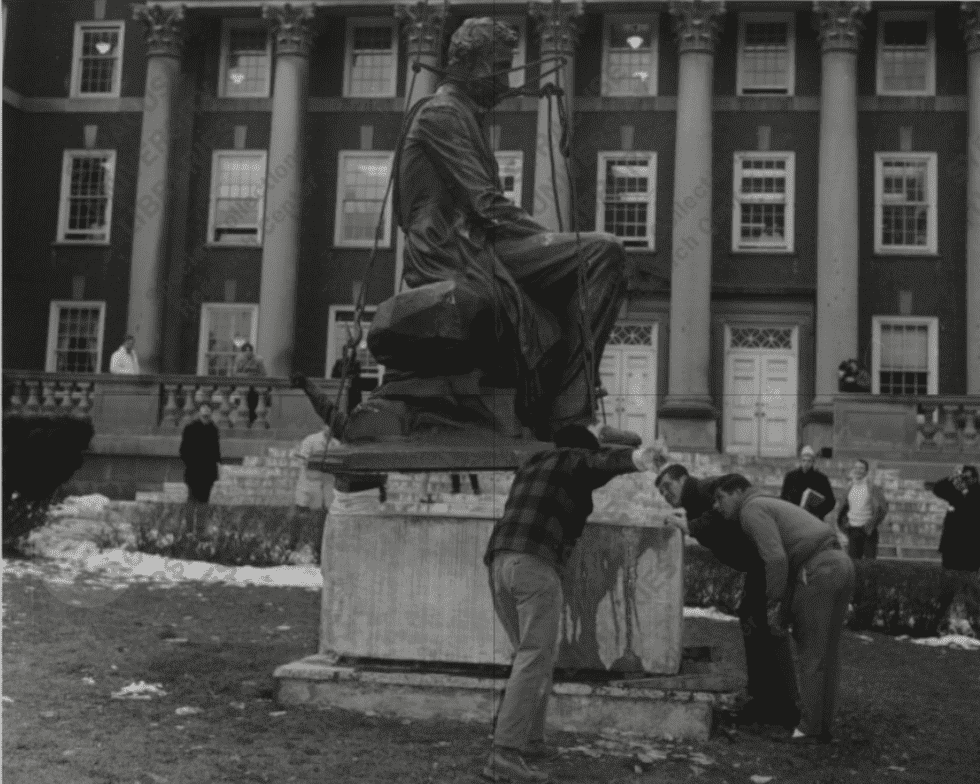Lincoln Statue
"Abraham Lincoln, Seated" by James Earle Fraser , 1930 [cast 1968]
Lincoln is a bronze statue by American artist sculptor James Earle Fraser. The statue is located on the hillside behind Maxwell Hall and adjacent to the Tolley Humanities Building. Lincoln stands 9 x 3 feet and features President Abraham Lincoln as a young adult, clean shaven, seated in a somewhat relaxed pose, and slouched over as if in serious contemplation. Whereas other monumental statues tend to portray Lincoln in an idealized and stylistic form, Fraser chose a more naturalistic depiction of the heroic figure. Lincoln appears in a very human form, perhaps illustrating his egalitarian spirit or his recognition of the higher calling of public service. This statue is the second bronze cast of Fraser’s original 1930 plaster mold. The first cast, Lincoln the Mystic, is located at the eastern terminus of the Lincoln Highway in Jersey City, New Jersey.
In 1972, the Jersey City memorial committee selected artist James Earl Fraser to create a monument of President Abraham Lincoln. Fraser reportedly told the committee “I don’t believe I have ever had a more enthusiastic feeling toward doing any monument than I have for this one.” Fraser hoped to create a statue that provided a sympathetic and human study of Lincoln. Fraser’s Lincoln is young, beardless, contemplative, and possibly worried or melancholic. The art critic Lorado Taft described the statue as showing Lincoln “in his younger days of poetic vision, of promise rather than fulfillment.”
In 1963, Martin H. Bush became assistant dean for academic development. Throughout the remainder of the decade, Bush asked dozens of accomplished figures to donate their papers, correspondence, and other materials to Syracuse University. Leila Sawyer, sister to James Earle Fraser’s wife Laura Fraser and executor of the Fraser estate, gave the entirety of Frasers’ papers, books, photos, and more than 500 pieces of artwork to Syracuse University as well as a $50,000 gift for SU to transport and maintain them. SU recast a bronze statue of the original plaster mold for Fraser’s Lincoln the Mystic and installed the statue on December 13, 1968. According to Domenic Iacono, director of the SU Art Galleries and Collection, the statue’s location between Maxwell and the Tolley Humanities Building (the Von Ranke Library at the time), was chosen to reflect “Lincoln’s stature as a statesman and his reputation as a self-taught authority on the law.”
James Earle Fraser was born in Winona, Minnesota in 1876. His father was a railroad engineer and with the expansion West his family moved to the Dakota Territory. At a young age Fraser was exposed to frontier life and many of his playmates were Native American children. He started carving sculptures from limestone taken from a quarry nearby. Those experiences would later influence his art. In 1881, he was sent to the Art Institute of Chicago in addition to being the assistant to sculptor Richard Bock. This was also when the Chicago World Fair was slated to be held which meant Bock’s studio was more hectic due to the large amount of architectural structures required. This provided an opportunity for Fraser to learn and improve his skills. Then, in 1895, with the help of Bock, Fraser was accepted to the French Academy of Fine Arts. There he would be introduced to American sculptor Augustus Saint-Gaudens who would become his mentor. In 1902, moved to New York City where he set-up his studio. Saint-Gaudens would send commissions to Fraser, ones he couldn’t execute himself due to the high volume of work. Fraser was commissioned to design large monumental sculptures for the Supreme Court, Archives, and Department of Commerce buildings, in addition to historical, presidential, and military portraits. He also designed the Buffalo Nickel and the United States Victory Medal, and was the recipient of the gold medal for sculpture from the National Institute and American Academy of Arts and Letters. His most notable sculpture is the End of the Trail depicting an exhausted Native American on a tired horse arriving at the end of the trail for the Panama-Pacific International Exposition held in San Francisco in 1915. James Fraser passed away in 1953.
"Lincoln." SU Art Galleries Record; Cooke, D. (2009). “A Different Lincoln.” Maxwell Perspective; Buckley, M. (2017, October 5). “Explore the SU campus through these 6 historic statues.” The Daily Orange; Bertazon, B. Analysis; SU News Bureau. (1969). “Museum Without Walls.” Academically Speaking; Haley, K. (2016, July 18). “Iconic Lincoln Statue on Campus Gets an Upgrade” SU News; "James Earle Fraser." Encyclopedia of Art; Special Collections Research Center; SU Photo and Imaging Center.
